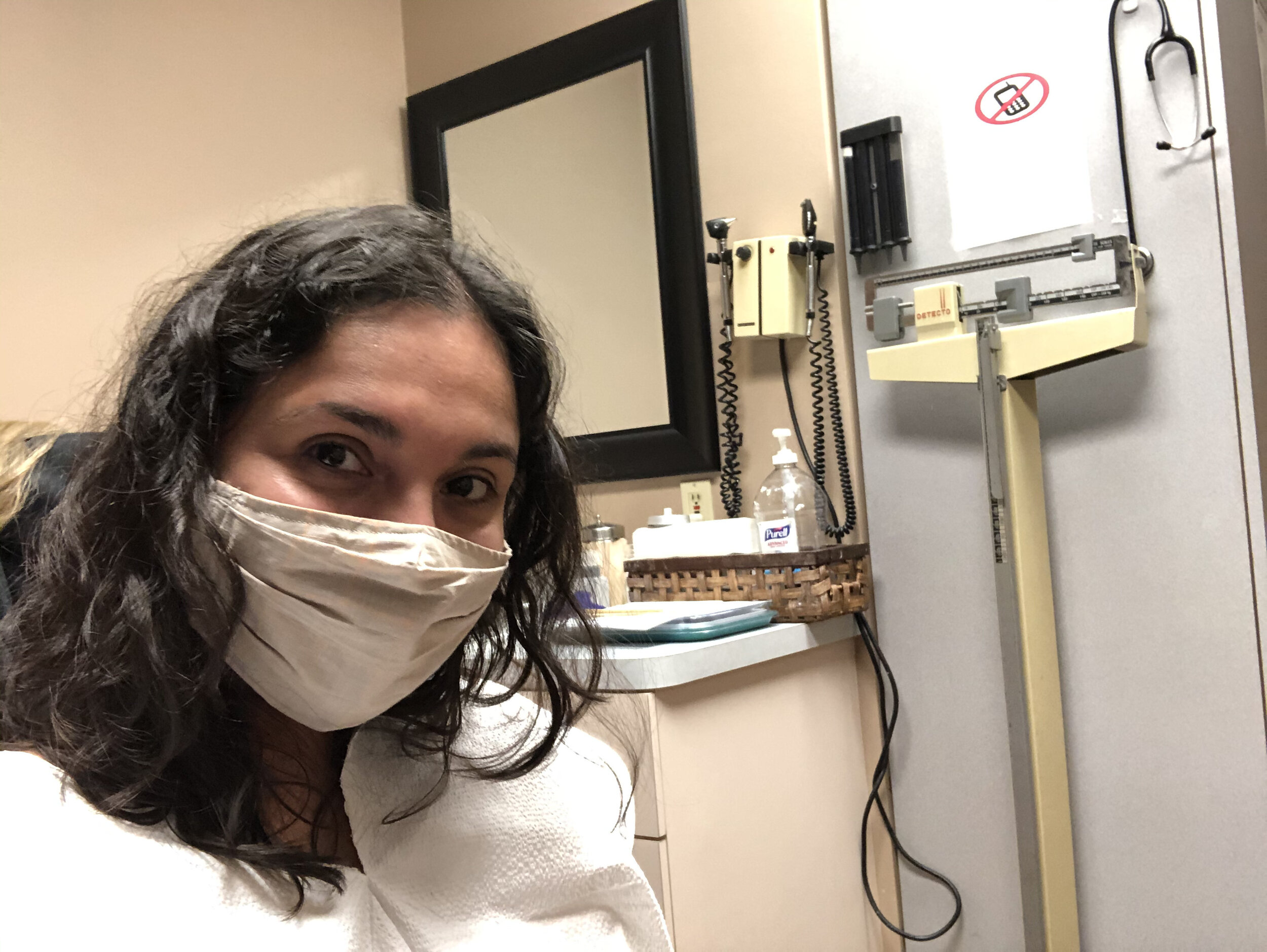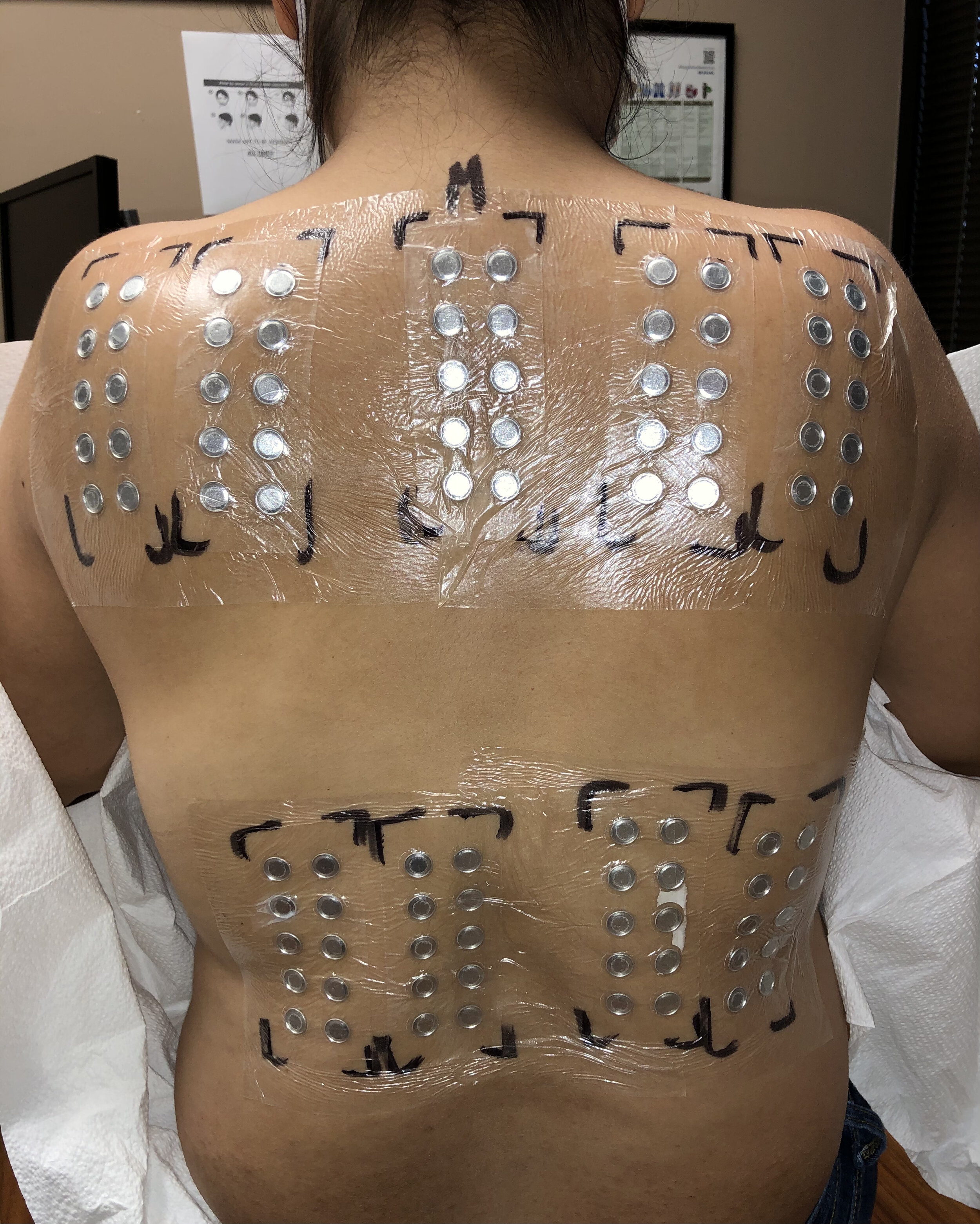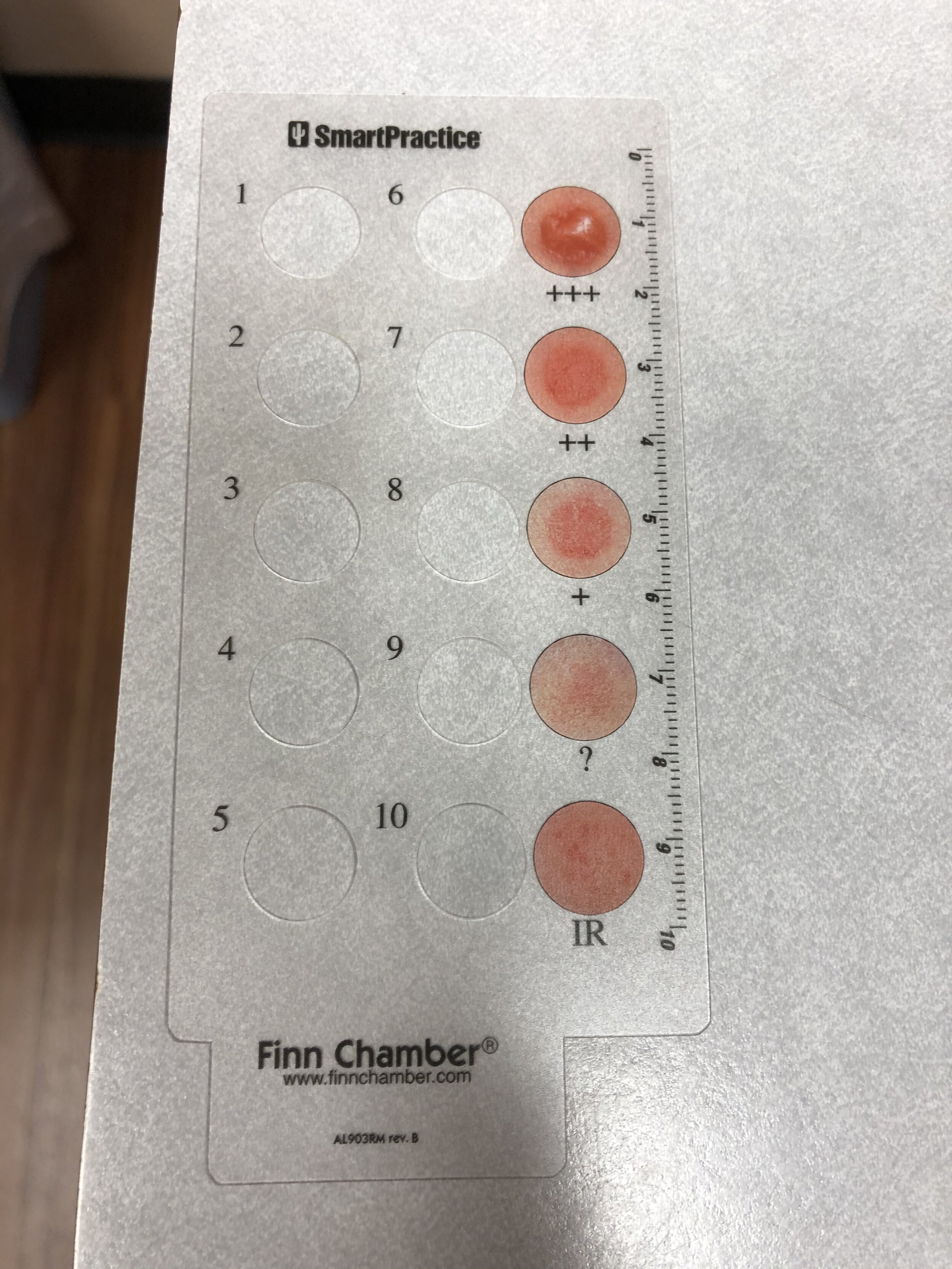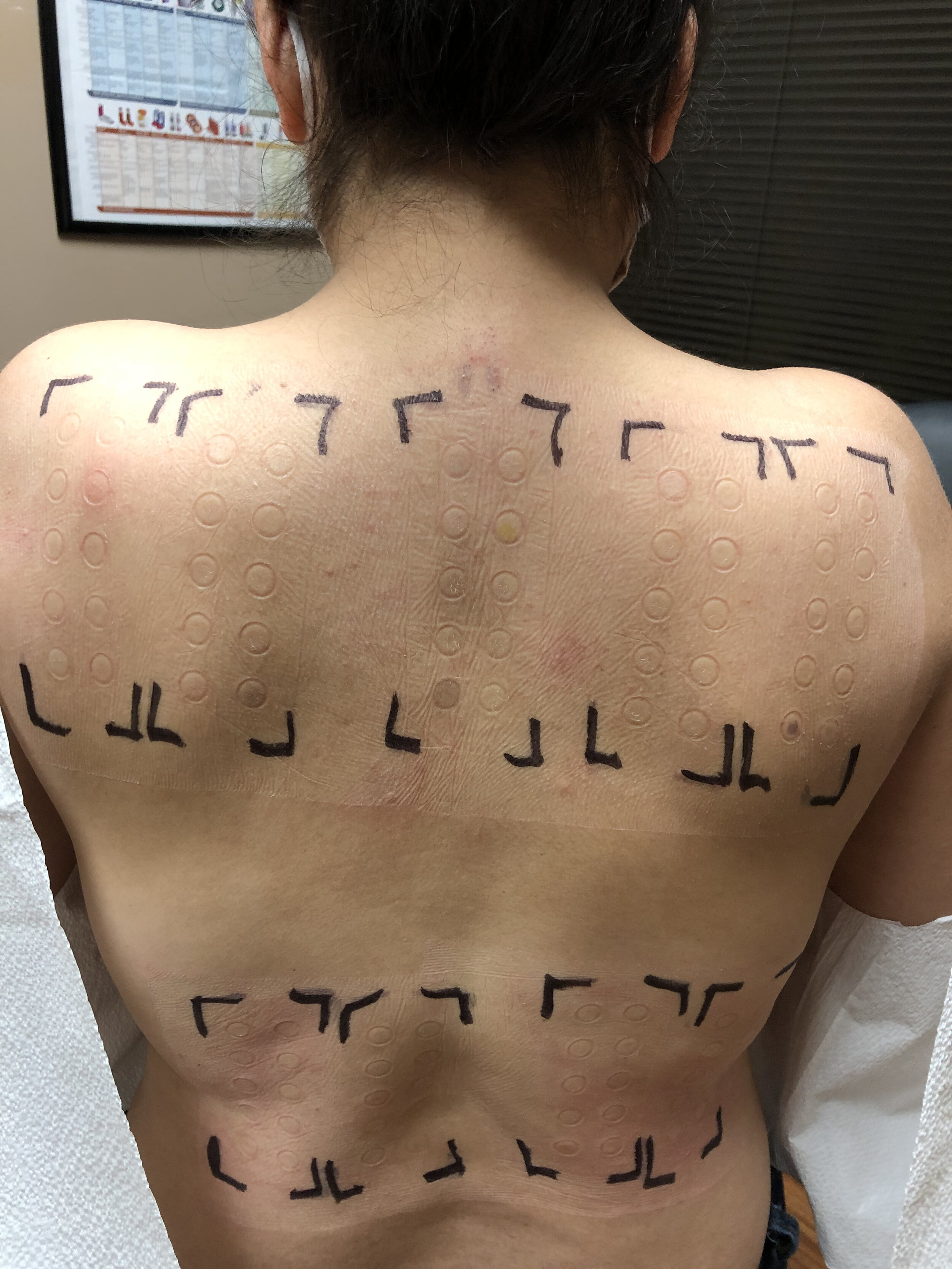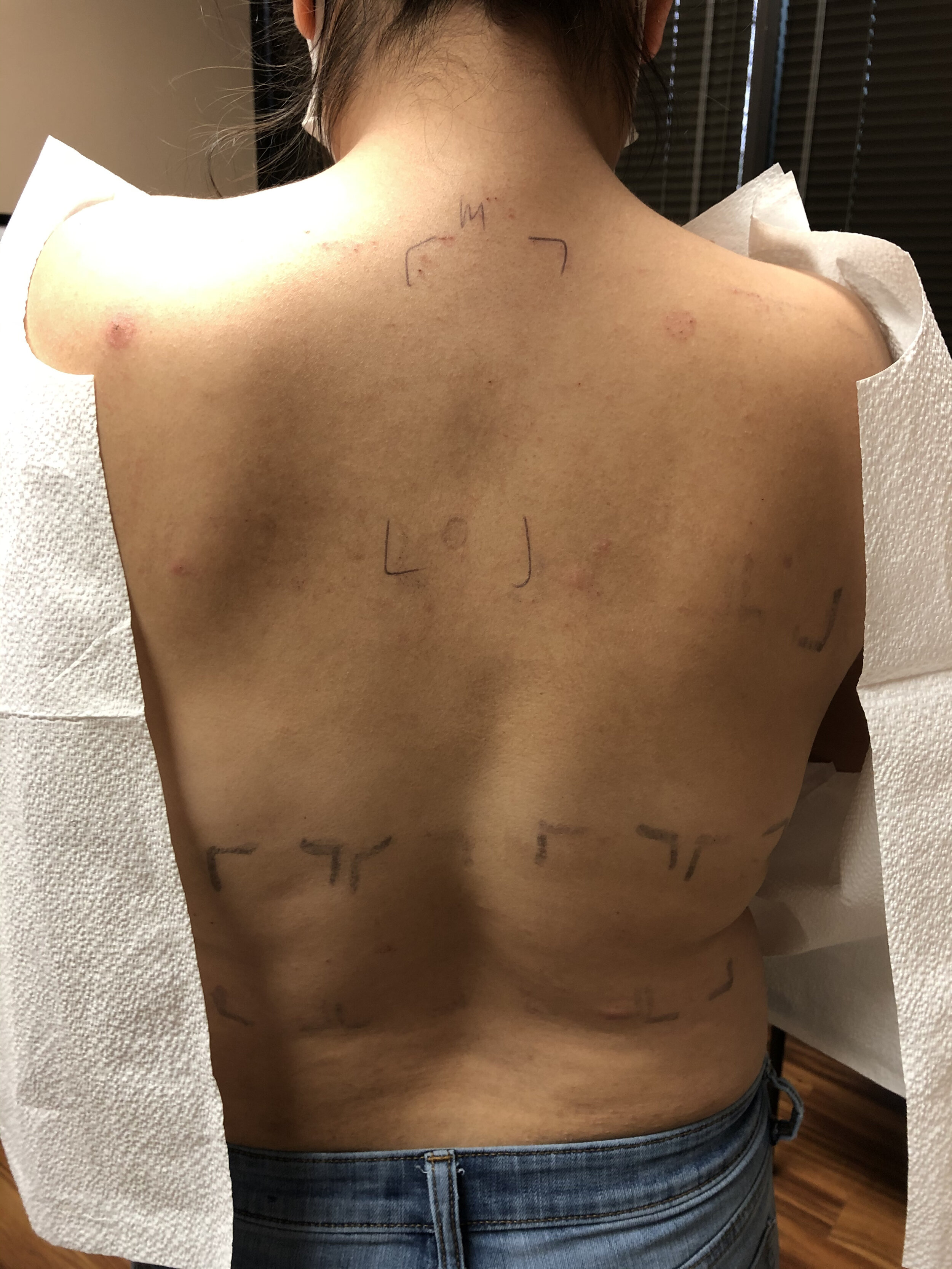Patch testing is an allergy skin test procedure to determine contact dermatitis allergies. Small amounts of potential allergens are put in tiny containers and taped onto the patient's back, with the substances exposed to the patient for a few days. Unlike an allergy skin prick test (also known as a puncture or scratch test), which are used to diagnose hay fever allergies, patch testing is used to diagnose contact allergies. Patch testing is recommended for patients with dermatitis.
It has been 5-10 years since my last patch testing and I wanted to find out the latest of my body’s skin allergies, specifically if I have new metal allergies, because I can’t find any metal jewelry to wear without causing skin rashes. My previous patch tests were done by a dermatologist, but this time I got tested by my allergist, Dr. David Engler from The Allergy Clinic in Houston.
The test takes 4 days. And if you test positive for any of the allergens, then it’s going to be an itchy week.
Tuesday, December 1, 2020 (Patches Applied)
I make note of my existing flare-ups on my neck, skin and lowerback. The nurse applies patches of allergens onto my back, avoiding my flared lower back. Once the patches are on, I cannot get my back wet (i.e., can’t shower or sweat until) or scratch until the test is over on Saturday. Almost immediately I start having really itchy spots on my back. This is going to be tough.
Thursday, December 3, 2020 (Patches Removed)
By Thursday, I am using breathing techniques to not scratch my back. The itching is intense and I cannot wait for this skin patch test to be over. The nurse removes the patches by aggressively ripping the clear tape off my back. It hurts, but feels so good, because it feels like my itches are being scratched. The nurse documents my skin’s reactions using a scale: Irritant reaction (IR), Uncertain (?), Weak positive (+), Strong positive (++), and Extreme reaction (+++).
My back is intentionally not cleaned. I must continue not scratching or wetting my back. At this point, we continue waiting until Saturday to see if late reactions occur. My back feels so much better without the patches on, so I’m already very relieved. I can’t wait to find out the results of my test on Saturday.
Saturday, December 5, 2020 (Results)
It’s test result day! The nurse confirms I’ve had no new reactions. My allergist comes in to review the results with me.
Colophony: Positive Reaction
According to AllergEAZE, “colophony comes from the sap of coniferous trees such as pines, junipers, firs, and cedars. Colophony (or rosin) is found in personal care and beauty products, topical medications, surface coatings, lubricants, adhesives and sealants.” This allergen is new to me, but it makes sense. In a previous patch test, I reacted positively to composite mix, which is basically an allergy to a super long list of plants. My body does not like plants and trees! This allergy result clarifies things for me: why I still react to fragrance-free makeup products and why I’ve been reacting to some bandaids (note: my 4-year-old reacts to some bandaids too!). I will definitely be researching my new colophony allergy.
2-Ethylhexyl-4-Methoxycinnamate: Positive Reaction
Say what? According to Chemotechnique Diagnostics, 2-Ethylhexyl-4-Methoxycinnamate is a chemical that is a UVB absorbing agent used in products such as sunscreens and cosmetic creams, lotions, lipsticks, hair care products, sun oils and some insect repellents. Well, that makes sense too. These are all products that cause reactions for me and I avoided because of their fragrance ingredient. I would be confused when the products didn’t have fragrance and I still reacted. I will be researching this new allergen as well.
Hydrocortisone: Positive Reaction
Oh, come on, universe! I have chronic eczema and I am allergic to hydrocortisone? My allergist told me this positive reaction may indicate I’m allergic to certain steroids, but since I don’t use them often (due to my Topical Steroid Withdrawal from a few years ago), I should be okay. Still, I’m going to be researching this as well.
Negative Reaction on Existing Allergens
My results showed negative results for fragrance mix, composite mix and dust mites. What?! These are my main skin allergens. I know I react to products that have the fragrance ingredient, whether it’s hand soap or makeup. And my dust mite allergy is undeniable. My allergist told me to continue avoiding these things if my body reacts to it, explaining that the patch test is not the most scientific type of testing and has limitations. He told me to pay attention to the positive results and not the negative results. Interesting.
Metals: Negative Reaction
Sigh. I didn’t get any positive reactions to the metals from my patch test. At this point, I’ve reacted to copper, most fake gold, 14k gold, some 18k gold, some stainless steel and some sterling silver, to name a few. I really hoped to find out which exact metals caused reactions, so I could avoid those specific metals. Looks like I’ll have to avoid metal jewelry in general, since my patch test wasn’t helpful.
Next Steps
In a nutshell, I have to avoid both my newly diagnosed allergens and my previously diagnosed allergens, plus metals, which makes me feel like I need to avoid everything. The silver lining is a new dust mite allergy treatment my allergist recommended. As an alternative to allergy injections for the dust mite allergy, there is an oral immunotherapy option called ODACTRA. It’s a prescription pill made of dust mite extract that dissolves under the tongue. Patients take it daily. I’m excited to try this immunotherapy. It would be a game changer for my dust mite allergy to improve!
Overall, I’m glad I did the skin patch test and plan on researching my new allergens and changing my lifestyle as needed to avoid my newly discovered allergens.

